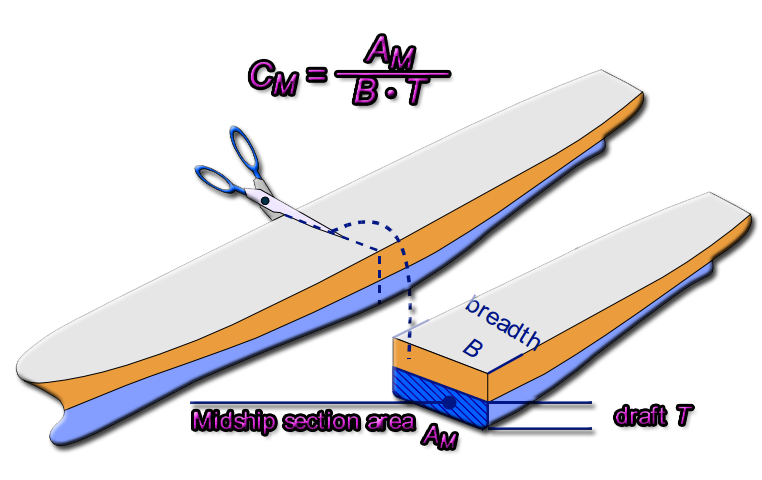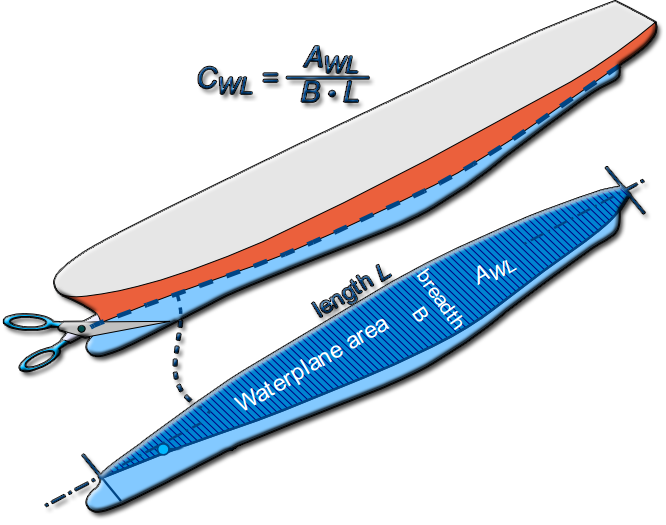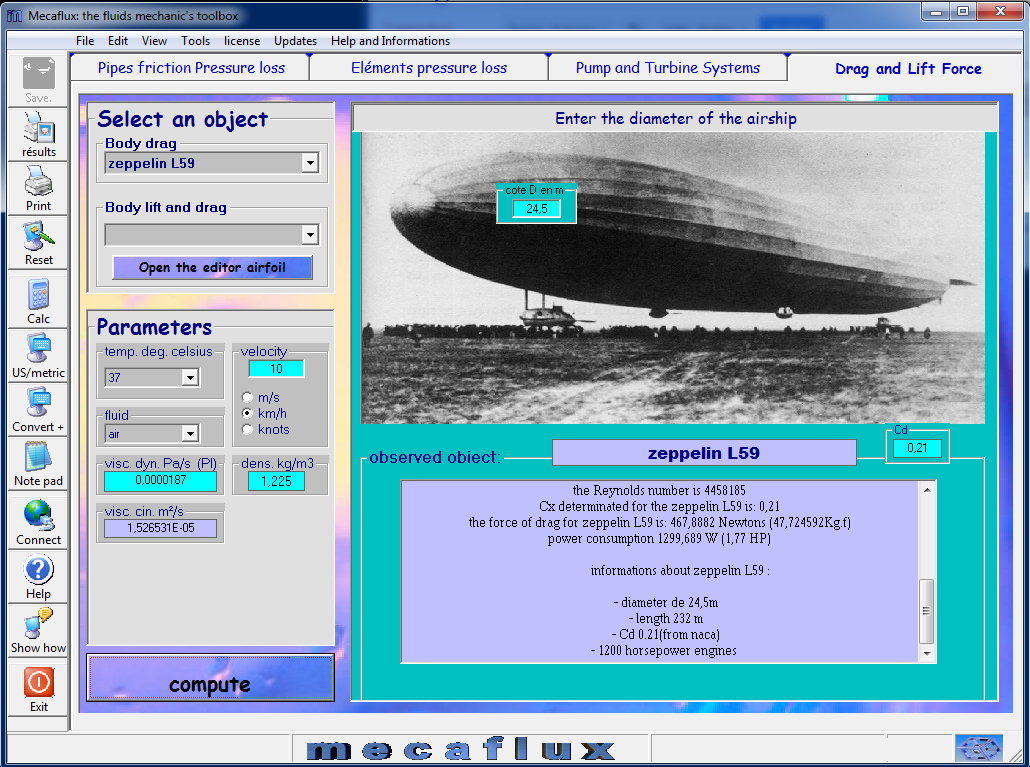

Naval architects use the value "Midship section coefficient" (Cm) to express the slenderness of the ship's hull form . This coefficient equals 1 only for a cuboid, for slender ships this coefficient always less than 1..
Remark: For the calculation of the profiled bodies tested in the wind tunnel , the values of Cz and Cx are given according to the wing surface.
The Reynolds number is also calculated differently if the body is shaped, or if the body is a flat plate or any geometric object.For more details see this page on the Reynolds number
waterplane area: The value of the waterplane area AWL, is used to obtain the coefficient of surface waterline Cwl = Awl/ (L*B) . This coefficient is equal to 1 only for a cuboid, for slender ships, this coefficient is always less than 1.
Using the midship or frontal surface area in Mecaflux standard: Sample calculation of aerodynamic drag or resistance of a vehicle based on its frontal area and CD. The Cx and midship objects or vehicles proposed in mecaflux are modifiable, if you prefer to enter your own data to calculate the Drag force
The value of the waterplane area AWL, is used to obtain the coefficient of surface waterline Cwl = Awl/ (L*B) . This coefficient is equal to 1 only for a cuboid, for slender ships, this coefficient is always less than 1.
Using the midship or frontal surface area in Mecaflux standard: Sample calculation of aerodynamic drag or resistance of a vehicle based on its frontal area and CD. The Cx and midship objects or vehicles proposed in mecaflux are modifiable, if you prefer to enter your own data to calculate the Drag force
